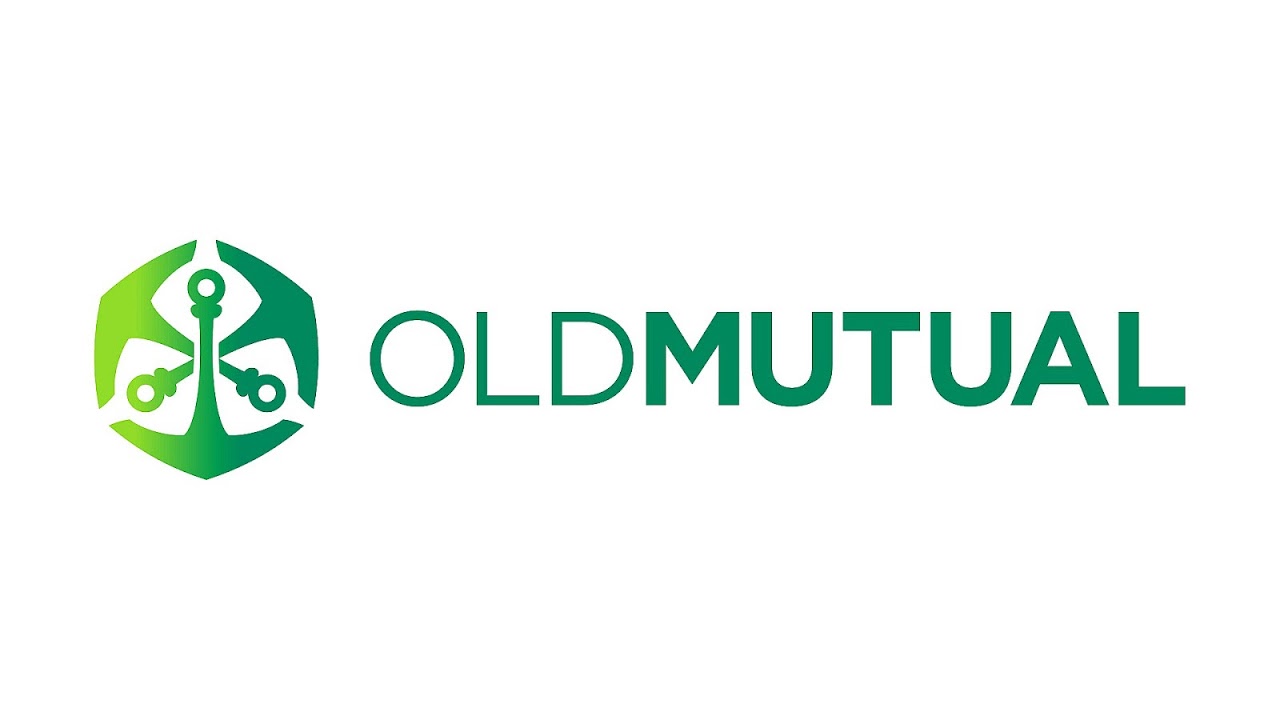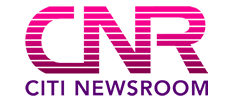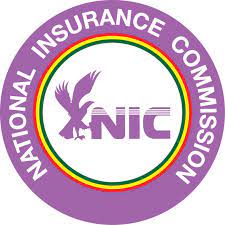The insurance industry plays a critical role in managing risks for individuals and corporates alike in a world of uncertainties. It is by no accident that almost every country in the world has some type of insurance mandated by law in order to provide the needed relief to affected persons/entities when insured risk events occur.
When adequately promoted and regulated, the insurance industry also contributes quite meaningfully to overall gross domestic product (GDP) of a country, with insurance premiums contributing as high as 5-10% of GDP in some of the developed economies (Global Insurance Market Trends Report, 2016).
Like many sectors of the economy, the insurance industry in Ghana, and much of Africa, is yet to achieve its full potential. This is particularly so in the case of life insurance which is usually not mandatory.
This article speaks to one particular reason for the underdevelopment of life insurance in Ghana; the paucity of adequate data on the uptake of life insurance policies. This paper proceeds to propose some novel interventions that must be embraced by the industry towards enhancing its performance.
Ghana Insurance Regulation and Regulatory Reporting
Act 724 (2006) of the Parliament of Ghana established the National Insurance Commission (NIC) as the regulator for the conduct of all insurance, reinsurance and insurance intermediary businesses in Ghana, except for health insurance which is regulated by the National Health Insurance Authority. Section 2, Clause 1, of the act captures the objectives and functions of the NIC as:
“to ensure effective administration, supervision, regulation, monitoring, and control of the business of insurance to protect insurance policyholders and the insurance industry other than health insurance under the National Health Insurance Act, 2003 (Act 650)”.
Clause 2 of this Section of the Act proceeds to direct the various functions that the Commission must perform towards the attainment of its objective as set out in Clause 1 above. The Insurance Act also empowers the Commission to issue specific regulatory guidelines and circulars as and when necessary that may become binding on all stakeholders in the insurance business in Ghana.
Further to the performance of all its functions, Section 20 of the Insurance Act 724 (2006) requires the Commission to publish annual reports of its activities, encompassing the activities and operations of all of its regulated entities, covering the preceding year.
In putting out its annual publications, the NIC relies on data and information which it collects and collates from its regulated entities via a monthly reporting template. The latest of this publication is the NIC’s “2017 Annual Report and Financial Statements” as was published earlier this year.
Over the years, the NIC’s annual report publications have been heavily skewed towards data and information on the non-life sub-sector of the industry to the disadvantage of the Life sub-sector. This is obviously the case because of the historical evolution of the Ghanaian insurance landscape where Life insurance underwriting was only a department of the then composite insurance companies until the coming into force of the insurance act in 2006. And ever since, even with the advent of rapidly growing investments in well capitalized life insurance companies in the market, life insurance premiums remain subservient to non-life insurance premiums in Ghana.
This situation puts Ghana’s insurance industry at odds with most countries around the world where insurance penetration, insurance density and insurance policyholder count is driven largely by the contribution of Life insurance companies rather than non-life companies.
This is evident in various international reporting on insurance around the world; an example being the Swiss Re Sigma No. 3/2016 report which publishes segregated data on life and non-life insurance penetration (measured in percentage terms) and insurance density (measured in currency terms) from selected countries around the world.
Shortfall of the Annual Insurance Industry Report
The 2017 NIC report, the latest publication of its series, happens to be the most comprehensive to date especially as it attempts to capture as much reportage on the life insurance sub-sector as it does the non-life sub-sector.
The report captures and reports various parameters of the overall life insurance sub-sector and also reflects the individual performances and/or contribution of all the 22 registered life insurance companies at the time. Captured below are some of the important parameters and key financial ratios that the 2017 report captures;
| Gross premiums |
| Percentage growth in premiums – year on year |
| Profit after Tax |
| Change in Policyholder inflows |
| Policyholder Coverage |
| Proportion of Investment to Assets |
| Policyholder Benefit Cover |
| Premium Retention ratio |
| Investment Yield |
| Return on Equity |
| Return on Assets |
| Expense Ratio |
| Change in Capital and Surplus |
| Aggregated Life Industry Income Statement |
| Aggregated Life Industry Balance Sheet |
Obviously, all these parameters and financial ratios of the various Life insurance companies as reported are skewed towards revealing the market conduct and financial prudence of these various companies. This level of details in the publication provides for industry transparency and reveals critical information on the financial strength and viability of the various insurance companies and how well they are managed.
With this much of information and transparency in the publications, policyholders and prospective policyholders are clothed with adequate data for their personal analysis of the strength and viability of the various insurance companies. Indeed, the regulator is also able to glean the adequacy and the level of leadership, professionalism and governance that is practised by the principal officers and management of the various companies so early interventions may be recommended in the event of breaches.
However, the report falls short of capturing and reporting other types of data which may be very fundamental to government policy decision making. Whereas the regulator in its gatekeeping role will focus on these ratios and parameters to continuously monitor the financial health and sanity of the industry, it does so at the expense of measuring and reporting the social, economic, demographic and geographic characteristics of the insured population.
These characteristics are much more tangible and easier for people to relate to so to influence the uptake of life insurance policies.
The government of Ghana, in making its policy decisions, must be well equipped with the makeup – geography, economic status, educational status, employment status, and many other social characteristics – of the current insured population so to be able to arrive at a holistic, comprehensive report that can inform unblemished policy decision making to curb the low insurance penetration that the country continues to record.
Indeed, such level of detailed information on the current insured population will also help the insurance underwriters to identify the preferences of the population and also identify the gaps in the adequacy of insurance solutions that they introduce into the market.
Insurance Penetration, Insurance-Inclusion and the Social Impact Measure
It is a considered view that African countries and other less insurance-inclusive countries must make strategic changes to how their advocacy and policy decision towards insurance inclusion is pursued. Insurance regulators from these countries must adopt an entire paradigm shift towards measuring and advocating Insurance Density and Policyholder Count rather than the continual focus on Insurance Penetration.
Insurance penetration is measured as total insurance premiums expressed as a percentage of GDP of the economy. Insurance density is measured as the ratio of total insurance premiums to the total population – insurance premium spend per capita. Policyholder Count is the total number of separate in-force (active) insurance policies – including both individual policies and group scheme policies – in the market.
Total Lives Assured is the total number of identifiable persons that have come under insurance protection, and stand to benefit from insurance claims, as a result of being nominated as lives assured under insurance policies.
Unfortunately, the insurance penetration parameter as a measure of insurance inclusion makes for very deceptive analysis as it measures the total amount of insurance premiums in the market rather than the number of people who are reached by insurance and actually have in-force insurance policies at a point in time.
Another challenge with the insurance penetration parameter is the fact that it is not an independent yardstick as its unit of measurement is a function of the performance of the other sectors of the economy and their contribution to GDP. Such that, should insurance premiums grow very significantly in a particular year, the insurance penetration measure will only record a corresponding significant jump if all other sectors of the economy remain at a constant growth.
Any rise in the output of the other sectors of the economy will erode the insurance penetration measure as it is recorded as a percentage of GDP. The other drawback of this measure remains that its score can be influenced positively by a single business with high premiums which may not be representative of the average premiums in the market or the actual spread and reach of insurance coverage across the country.
It is for above reasons that insurance regulators must shift focus away from measuring the total insurance premium income to rather projecting the total number of individual life policies purchased (policyholder count) and the corresponding total number of lives insured amongst the population.
The other insurance reporting focus area that must be projected for policy decision making is the insurance density parameter as it reflects the actual average household expenditure on insurance even as population increase remains rampant in Ghana and across many of the insurance-excluded markets.
For instance, an increase in the number of insurance policyholder counts or number of lives assured is a true reflection of the quantum and reach of insurance inclusion. Also, any increase in insurance density scores will most accurately reflect an increase in the actual uptake in insurance either by new entrants or the existing insured increasing their spend on insurance.
However, while these parameters are projected, their reportage and analysis cannot be done in isolation either. These parameters must be analysed in conjunction with the actual demographic data of the particular insured population so to have complex, big data, which can be analysed in diverse ways to churn out key strategic trends in the insurance market.
Ultimately, however, all these analysis and reports must be disaggregated and analysed in conjunction with various other social and economic data from other sources; be they primary or secondary. This approach will bring about a Ghana with readily available, user-friendly, industry coherent and widely disseminated data for strategic analysis leading to government and social policy decision-making for rapid sustainable economic development.
The table below captures some proposed parameters that must be collected, collated, analysed and reported on in addition to the financial/prudential ratios that are put out in the regulator’s annual report.
| Data Parameter | What is Measured |
| Total Policyholder count | Reveals the accurate number of Ghanaians with at least one in-force Life insurance policy. |
| Total Lives assured | Indicates the number of Ghanaians who are protected against various insurable risks |
| Total premium revenue | Reflects the amount of money Ghanaians have spent to indemnify themselves against their insured risks. |
| Total benefits assured | Reflects the amount of money that is due policyholders in the event of risk event occurrences. It reflects the total underwritten liability of life insurance underwriters |
| Insurance Density | Measures the average insurance spend amongst the population. When analysed together with other available economic data, it will reveal the quantum of insurance spend against other priorities of households |
| Regional breakdown of policyholders | Reveals which of the 10 regions lag the most in insurance inclusion and which regions prefer which kinds of policies. |
| Policyholder gender | Reveals the gender affinity towards life insurance and risk protection in Ghana. This parameter, when analysed against other parameters and other social and economic data, will throw up relevant information on gender development issues. |
| Policyholder age | Reveals the age bracket and which generation of Ghanaians are more risk-protection conscious. This is another key parameter that must be analysed against other parameters and other social and economic data. |
| Policyholder occupation | This parameter will reveal the social classes of Ghanaians who are most insurance-included. It will reveal the level of informal sector uptake as against various sectors of the formal/corporate employees. |
| Policyholder Income level | This parameter will reveal the relationship between income levels and insurance inclusiveness. Do those who earn more spend more to protect their wealth as against lower wage earners? Are insurance premiums too high for lower wage earners to afford? |
| Policyholder level of education | Supports or disproves the hypothesis that those with higher levels of formal education understand the need for insurance and savings the most in Ghana |
| Class of Life business (business line classifications) | This parameter will reclassify the classes of life insurance policies into less technical and simpler ways for reporting and policy decision purposes. For instance; pure risks policies as against savings & risk policies. Bundled policies (resultant policies arising out of the need for other transactions; credit life and mortgage life policies) as against personally motivated policies (policies purchased for personal wealth and family risks protection). This will also cure the issue of overlapping classes (products) that are underwritten and reported by both life and non-life insurance companies. |
| Type of policy (Individual policy vrs. Group schemes) | Identify the number of individual life policies as against number of Group Life schemes in the market. |
| Group scheme premiums versus Individual life premiums | Identify the contribution of individual contract policies as against the aggregated premiums arising from group schemes. This will give an indication of the level of employer sponsored life insurance schemes in the market as Employee Benefit Group Life schemes are significant accelerators of total Gross Written Premiums scores because of the high premiums they command. |
| Number of lives covered under Group scheme | This will be a key parameter to be identified as a unique set of insured population. This will make a good parameter to be factored into the “Total Lives Assured” parameter. |
| Employee Benefit Group Life Scheme per industry | This is targeted at identifying those employers who value the lives of their employees (and their families) by providing adequate income replacement insurance policies for their workforce. It can further reveal the multiples of cover they provide and the scope of benefits the employer schemes provide. The industry specific breakdown of this parameter must be known for strategic target of the industries that lag on this score. |
| Total number of claims paid vrs total number of claims repudiated | This will reveal the level of fraud or attempted fraud by policyholders in the market. It will also influence the level of confidence in insurance as it is widely reported that insurance companies do not pay benefits when claims are put forward. Other policyholders may also become encouraged/emboldened to put forward claimable events which may befall them as some policyholders are intimated to approach their insurers to make claims. |
| Distribution channel | This will reveal the most preferred medium by which policyholders buy insurance. Apart from identifying the penetration of the traditional channels, including insurance agents and brokers, this parameter will reveal and measure other channels’ contributions; bancassurance, mobile insurance (telco-assurance), micro-insurance, retail shopping centres, fintech aggregators, loyalty reward schemes, etc. |
| Total commissions and fees paid to intermediaries | This is an expense measure for insurers that must corroborate the revenue measure of brokers in the market. Any significant difference in this expense line as reported by insurers as against what is reported by Brokers as revenue will expose any underreporting or overreporting by either party. |
| Co-insurance | As a rapidly growing phenomenon especially in the Group/Corporate business underwriting space, this parameter will reveal the quantum of Group Schemes that are underwritten by two or more insurance companies under one policy (shared risk, shared premium and shared claims payment). This parameter will throw out a reconciled position of the shared business in the market as these premiums could easily lead to multiple reporting of same premiums from the various co-insurers who are partaking on the scheme. |

Partnerships towards Sustainable Development
This article is not oblivious of the paradigm shift that will be required to implement such vast additions to the regulator’s reporting going forward. It may be argued that the regulator could easily take on the additional responsibility of reporting on these indicators in its annual reports, but there is a considered view that this approach will be beset with serious challenges and will most likely prove futile.
It is noted that the insurance regulator in Ghana has under its ambit a large number of regulated entities (27 non-life companies, 22 life companies, 79 brokerage firms, 5 reinsurance companies, 2 reinsurance brokers, and 3 loss adjusting companies) to grapple with even as it attends to its other day-to-day functions of maintaining the sanity and health of the sector.
Apart from these downsides, the bigger challenge may be that the regulated entities, the primary source for aggregating such data, may themselves not have adequate level of data intelligence in their organisations so to be able to submit same to the regulator for collation and reporting. Such challenges actually present an opportunity for the entire industry to avail itself for capacity building in Management Information Systems (MIS) and data analytics so the various entities can mature in making data-driven management decisions.
The United Nations’ Sustainable Development Goals (SDG), goal 17 – “strengthen the means of implementation and revitalize the global partnership for sustainable development” – encourages various facets of knowledge and skillsets from different institutions and organisations coming together with impactful contributions towards the attainment of the shared development goals by 2030.
As such, just as the NIC collaborates with the German Development Agency (GIZ) on many projects, for instance, the regulator could commission development partners to support it in undertaking an initiative of this nature to a successful end. The preponderance of evolving nimble and agile fintech and insurtech companies, together with ardent emerging financial inclusion think tanks, can be put to some good partnerships in this regard.
Benefits to Stakeholders
The above parameters and the many others that could be considered for analysis will return positive impacts on the social and financial front to various stakeholders. Some of these anticipated impacts include;
- Government Policy Impact: for the first time, the government of Ghana will have data on the particular social and financial status of all those insured, where they are, what they do, etc. This will provide relevant information towards targeted insurance education and campaign within the broader scheme of the financial education campaign being championed by the government. The campaign will be better targeted in terms of the geography and economy of the places that lag behind in uptake, the language of facilitating the campaign, the level of detail and granularity required in packaging the training material, etc.
- Regulatory impact: these parameters will lead to stronger, data-driven supervision and regulatory oversight over the entire industry. The analysis of these parameters together with data from the other regulated insurance entities will help identify lapses in the monthly reports as submitted by all the regulated entities. The regulator will be able to have a rather widespread view of its regulated entities to inform more accurate problem-solving regulatory interventions.
- Insurance Industry Impact: reporting on these parameters will produce one-stop-shop information on the entire industry to inform deliberate strategy formulation and implementation by the various insurance companies and the intermediaries alike. Such reporting will inform the Boards of the various insurance market players to direct their investments appropriately to where the identifiable gaps will be identified so to maximise returns for their shareholders. The management and leadership of the various insurance companies will be compelled to build data intelligence so to be able to submit such data to the regulator as will be required. The insurers will now be able to have adequate data to inform appropriately targeted product development and risk-appropriate pricing to attract patronage. The publication of such broad-based holistic data from the regulator will lead to healthier competition in the market; less price wars and unprofessional conduct by practitioners as detailed information on the market will be readily available to all the industry players. Reinsurance companies will have a broader understanding of the various risks underwritten in the market and will react much more appropriately to innovations that insurers will put forward in the market.
- International Agencies and Development Partners: this group of very important stakeholders in the affairs of developing nations like Ghana will have readily available data on what the exact gaps in the uptake of insurance in Ghana are so they may support government’s course more appropriately in that regard. It will inform and direct where donor support should be channelled to for maximum impact on insurance uptake. With trusted, accurate, timely and readily available data on the life insurance market, donor agencies and development partners will be more comfortable to invest in direct-impact institutions and programs that support insurance uptake.
Conclusion
This write-up makes the case very forcefully that it is only when the industry is knowledgeable about the dynamics and nuances of the insured population that it can effectively tackle the situation of the insurance-excluded. A critical analysis of the social demographic status of those who are risk-protected will throw up certain unique and specific trends that can be relied upon to isolate that population so all focus can be geared appropriately towards those who remain excluded.
By: Sosthenes K. Konutsey |Ghana| konutsey@gmail.com
The writer is a long-standing player in the financial services industry – Banking, Insurance and Pensions Administration – and an advocate for Financial Inclusion and Sustainable Development.











